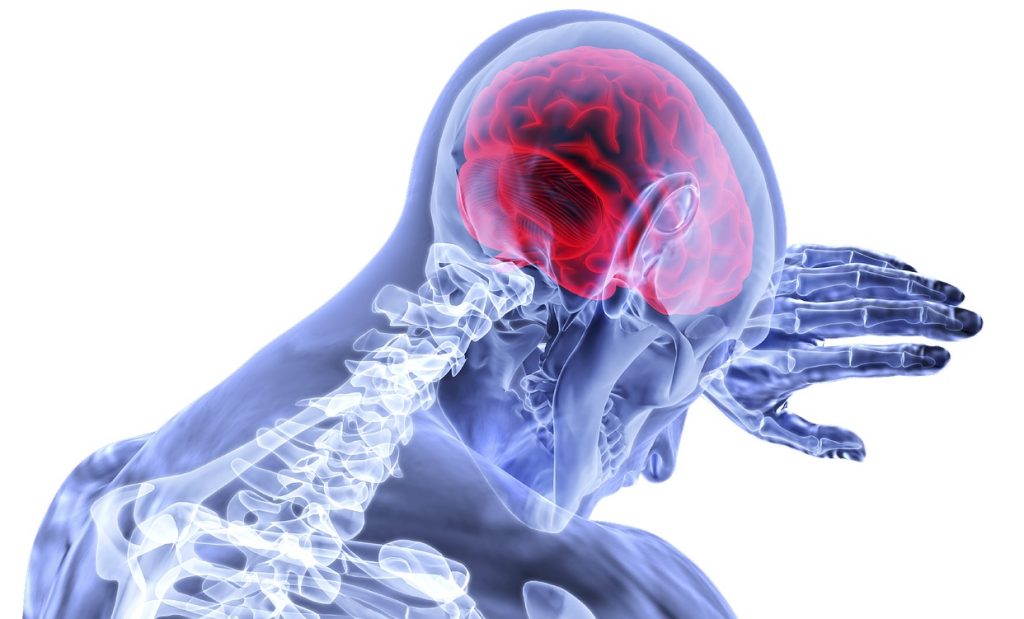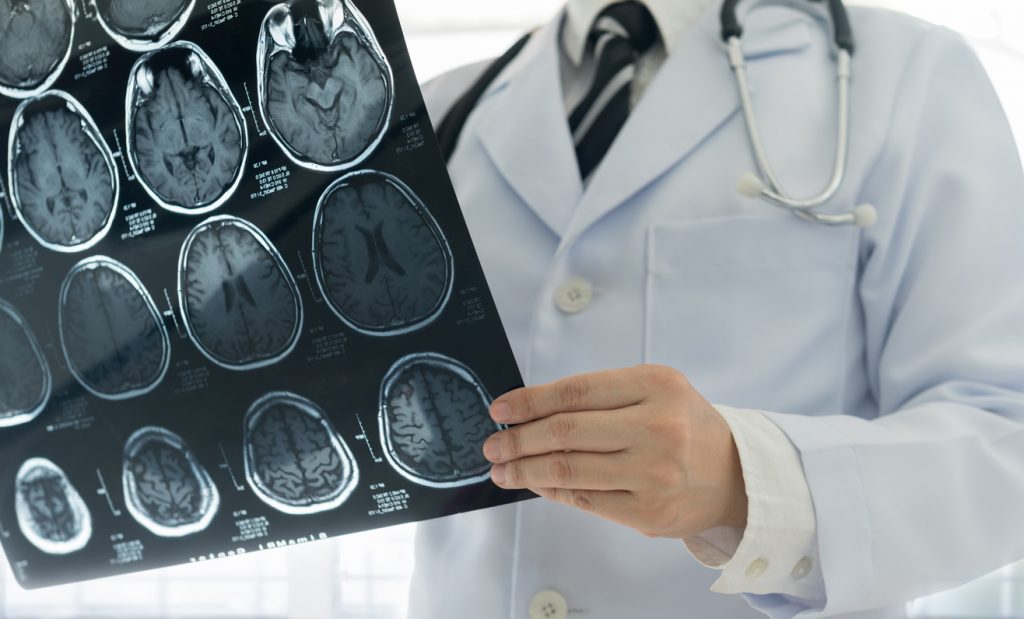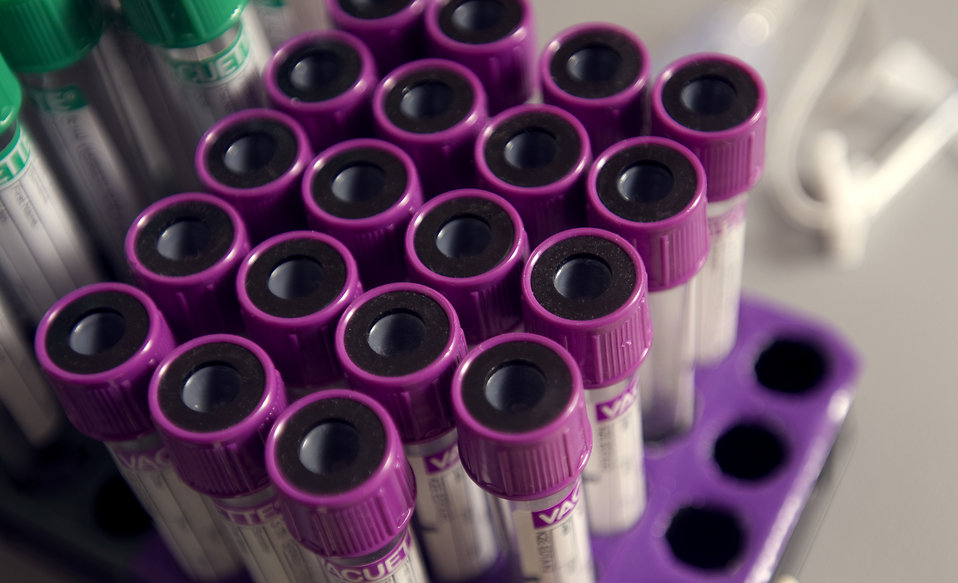- What is the Peripheral Nervous System (PNS)?
- Afferent division of the PNS
- Efferent division of the PNS
- Autonomic nervous system
- Neurotransmitters
- Innervating organs
- Sympathetic dominance
- Parasympathetic dominance
- Receptors of the autonomic nervous system
- Cholinergic receptors
- Adrenergic receptors
- Somatic nervous system
- Neuromuscular junctions
- How does the PNS change with age?
What is the Peripheral Nervous System (PNS)?
The peripheral nervous system (PNS) is part of the overall nervous sytem of the body. The overall nervous system consists of two sections – the central nervous system (CNS) and the peripheral nervous system (PNS). An overview of the cells of the nervous system can be found here.
The CNS consists of the brain and the spinal cord. The PNS consists of the rest of the nervous system.
The PNS can be divided into two components – the afferent division and the efferent division.
Afferent division of the PNS
Afferent information is sent towards the nervous system regarding the internal environment of the body such as information about blood pressure. Although we are not conscious of this information being processed, this system is vital for determining a suitable outgoing response to maintain the normal functioning of the body. Subconscious information from the internal organs is transmitted via an incoming pathway called a visceral afferent. Afferent inputs that reach conscious awareness are known as sensory afferents and transmit sensory information. This sensory information is characterised by our senses including vision, hearing, taste and smell.
The afferent division of the PNS can be understood by looking at how various special senses function individually – for example, the sense of hearing or the sense of vision.
Efferent division of the PNS
The efferent division sends information from the nervous system to the organs of the body which then carry out the appropriate response. The efferent division is generally a link between the central nervous system and the effector organs so that the CNS can regulate the various responses. As part of the regulation process, the CNS initiates electrical signals known as action potentials in the outgoing (efferent) neurons whose nerve endings (known as axons) terminate on these organs. These efferent neurons are part of the PNS.
The efferent division of the PNS can be divided into two components – the autonomic nervous system and the somatic nervous system.
Autonomic nervous system
A pathway in the autonomic nervous system extends from the CNS to an innervated organ. Two neurons make up this pathway. The cell body of the first neuron in the chain is located within the CNS. Part of the neuron, namely the axon, synapses with the cell body of the second neuron. Part of this second neuron (the postganglionic fibre) then innervates the effector organ in the body. The peripheral nervous system is closely connected to the CNS. All output carried out by the autonomic system originates in the CNS, and the CNS in turn receives input from the somatic nervous system described later in this article.
The autonomic nervous system is divided into two componens – the sympathetic nervous system and the parasympathetic nervous system.
Sympathetic nervous system
Sympathetic nerve preganglionic fibres originate in the chest and abdominal regions of the spinal cord. These fibres synapse with the postganglionic neurons on either side of the spinal cord. From this, long postganglionic fibres terminate on the appropriate effector organ.
Parasympathetic nervous system
Parasympathetic preganglionic fibres originate from the head and lower back areas of the CNS. These fibres are very long and only terminate at near the effector organs. From this, very short postganglionic fibres terminate dirctly onto the cells of the effector organ itself.
Neurotransmitters
Neurotransmitters are chemical messages that transfer signals within the nervous system. One common neurotransmitter is Acetylcholine (ACh), which is released by both sympathetic and parasympathetic preganglionic fibres of the efferent division of the PNS. However, the postganglionic endings of these two systems release different neurotransmitters which then act on the effector organs.
Parasympathetic postganglionic fibres release ACh. These fibres are therefore called cholinergic fibres. Most sympathetic postganglionic fibres release the neurotransmitter noradrenaline (also sometimes known as norepinephrine). These fibres are called adrenergic fibres.
Neurotransmitters are released from several branches of postganglionic fibres so that a large area of the effector organ is able to be influenced, making the system more efficient.
Innervating organs
Sympathetic and parasympathetic nerve fibres tend to exert opposite effects in a particular organ. Most organs are innervated by both systems to some extent.
For example, in the heart, sympathetic stimulation increases heart rate while parasympathetic stimulation decreases it. In the digestive system however, sympathetic stimulation slows movement in the gut while parasympathetic stimulation enhances it.
Both the sympathetic and parasympathetic systems are partially active in most organs, and there is generally always a certain level of activity going on. This ongoing activity is known as tonic activity. Under certain circumstances, the activity of one system can dominate the other. The shifts in balance between the two kinds of activity are adjusted to meet the specific demands of the individual organ.
Sympathetic dominance
The sympathetic system promotes responses that prepare the body for strenuous physial activity under stressful situations. This response is also known as the “fight or flight” response, since the body is geared up to either fight against or flee from the threat. Several body systems are involved in this response:
- Heart rate increases
- The heart beats more forcefully
- Blood pressure increases
- Respiratory airways dilate
- Glycogen and fat stores are broken down to be used as fuel
- Skeletal muscle blood flow increases
All these responses server to increase the flow of blood that is rich in oxygen and nutrients to skeletal muscle in anticipation of strenuous physical activity. Some body systems are not essential in facing the threat and are therefore inhibited by the sympathetic system as part of the “figh or flight” response. These systems include the digestive and urinary systems.
Parasympathetic dominance
The parasympathetic system maintains general “housekeeping” activites in the body under nonthreatening circumstances, and dominates in quiet relaxed situations. Under parasympathetic dominance, functions such as digestion and the emptying of the urinary bladder are enhanced, while those promoted by the sympathetic system are slowed down. The parasympathetic system is therefore known as the “rest and digest” system.
Receptors of the autonomic nervous system
When neurotransmitters are released, they bind to various kinds of receptors on tissue cells. The kind of receptor a neurotransmitter binds to is important in determining the response of the tissue.
Cholinergic receptors
There are two types of cholinergic receptors (activated by ACh) – nicotonic and muscarinic receptors.
Nicotinic receptors
Nicotonic receptors are found on the postganglionic cell bodies in all autonomic ganglia. These receptors respond to the ACh from sympathetic and parasympathetic preganglionic nerve fibres. The following events occur when ACh binds to these receptors:
-
ACh binds to nicotonic receptors
-
Ion channels in the postganglionic cell open
-
Na+ ions flow into the cell and K+ ions flow out of it
-
More Na+ flows in than K+flows out
-
More positive charge enters the cell and the voltage in the cell become more positive
-
An electrical signal called an action potential is initiated in the postganglionic cell
Muscarinic receptors
Muscarinic receptors are found on the cell membranes of effector organs such as smooth muscle, cardiac muscle and glands. ACh released by parasympathetic postganglionic nerve fibres binds to these receptors, which then activate the response from the target cells by activating numerous other chemical messengers, resulting in a second messenger cascade reaction.
Adrenergic receptors
Adernergic receptors bind to noradrenaline and adrenaline. There are several types of adrenergic receptors, and these are distributed among the effector organs which include smooth muscle, cardiac tissue and the respiratory airways.
Somatic nervous system
The somatic nervous system is part of the efferent division of the PNS and is considered to be the voluntary branch. The axons of this system are called motor neurons and are used to innervate skeletal muscle. ACh is released from the motor neurons, and stimulates skeletal muscle, causing it to contract. Many neuromuscular junctions are part of the somatic nervous system to allow this process to occur.
Neuromuscular junctions
Neuromuscular junctions are junctions between nerves and muscle cells. Nerve and muscle cells do not actually come into direct contact with one another so that no electrical signal can be transferred directly from the nerve to the muscle cell. ACh is therefore used to carry the signal between the two components. The following events occur at a neuromuscular junction when a muscle contracts:
- An action potential (an electrical signal) is transferred to the end of the nerve cell
- This causes voltage-activated calcium channels to open
- Calcium is released
- The release of calcium triggers the release of ACh
- ACh binds to the receptor sites on the muscle cell
- Chemically-activated channels on a specialised portion of the muscle cell open. This portion is called the motor end plate.
- Na+ and K+ ions flow through these channels
- More Na+ flows in than K+ flow, resulting in an overall postivie charge inside the cell
- The overall cell voltage becomes more positive. This change is know as the end plate potential (EPP)
- The EPP initiates an action potential in the middle of the long muscle cell
- Current flows throughout the muscle cell in towards the ends of the cell in both directions
- Action potentials are initiated along the muscle cell
- This electrical activity causes the muscle to contract
Aging of the PNS
The autonomic nervous system becomes gradually impaired with aging and less efficient. An important part of the autonomic nervous system, the baroreflex, decreases with age. This reflex restores blood pressure after physiological disturbances. Its reduced efficiency with age leads to a decreased range of heart rates, and an increased range of blood pressure.
References
- Robertson D, Biaggioni I (eds). Disorders of the autonomic system. Australia: Harwood Academic; 1995.
- Saladin KS. Anatomy and physiology – the unity of form and function. 3rd ed. New York: McGraw-Hill; 2004.
- Sherwood LS. Human physiology – from cells to systems. 5th ed. Belmont: Brooks/Cole – Thomson Learning; 2004.
All content and media on the HealthEngine Blog is created and published online for informational purposes only. It is not intended to be a substitute for professional medical advice and should not be relied on as health or personal advice. Always seek the guidance of your doctor or other qualified health professional with any questions you may have regarding your health or a medical condition. Never disregard the advice of a medical professional, or delay in seeking it because of something you have read on this Website. If you think you may have a medical emergency, call your doctor, go to the nearest hospital emergency department, or call the emergency services immediately.






